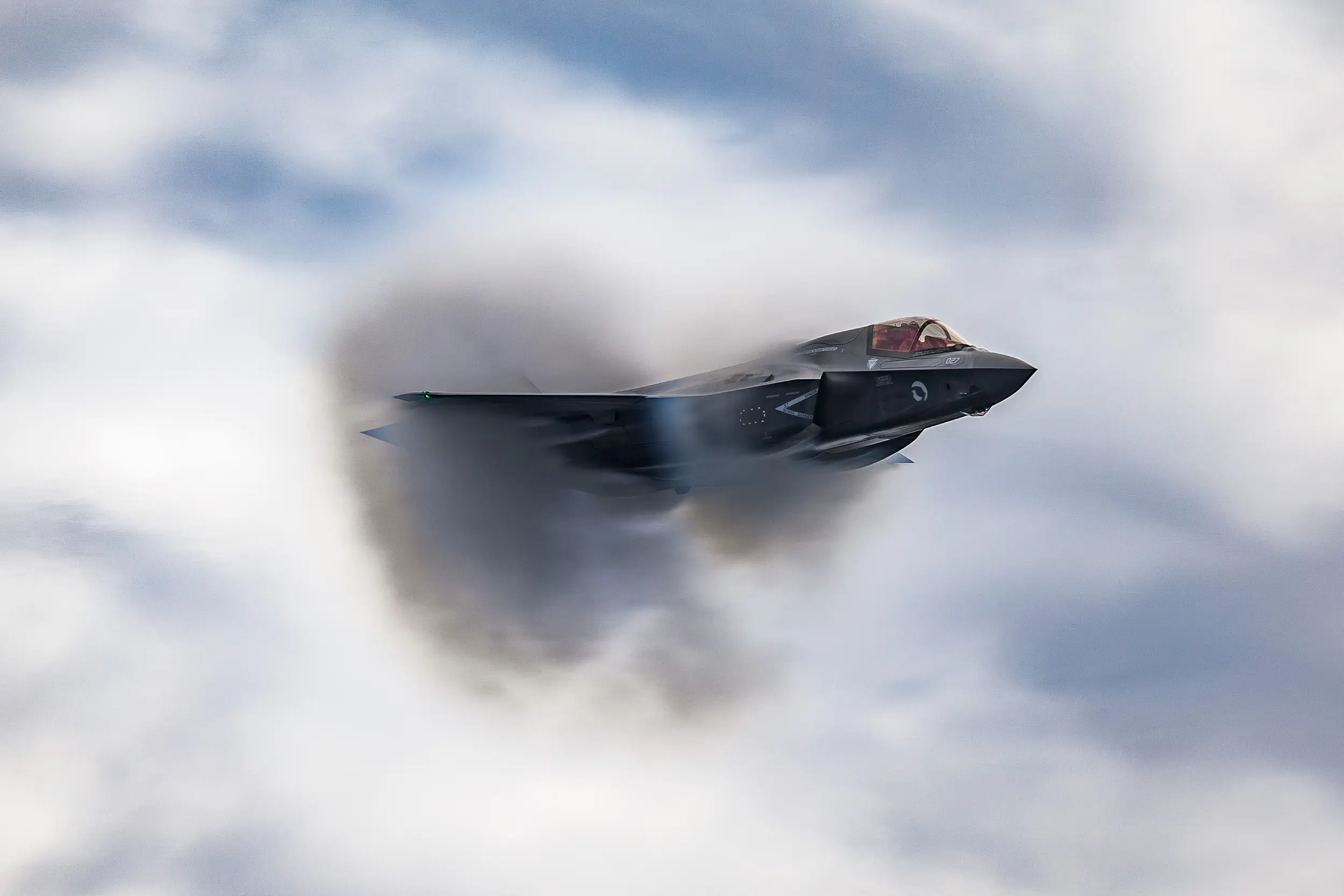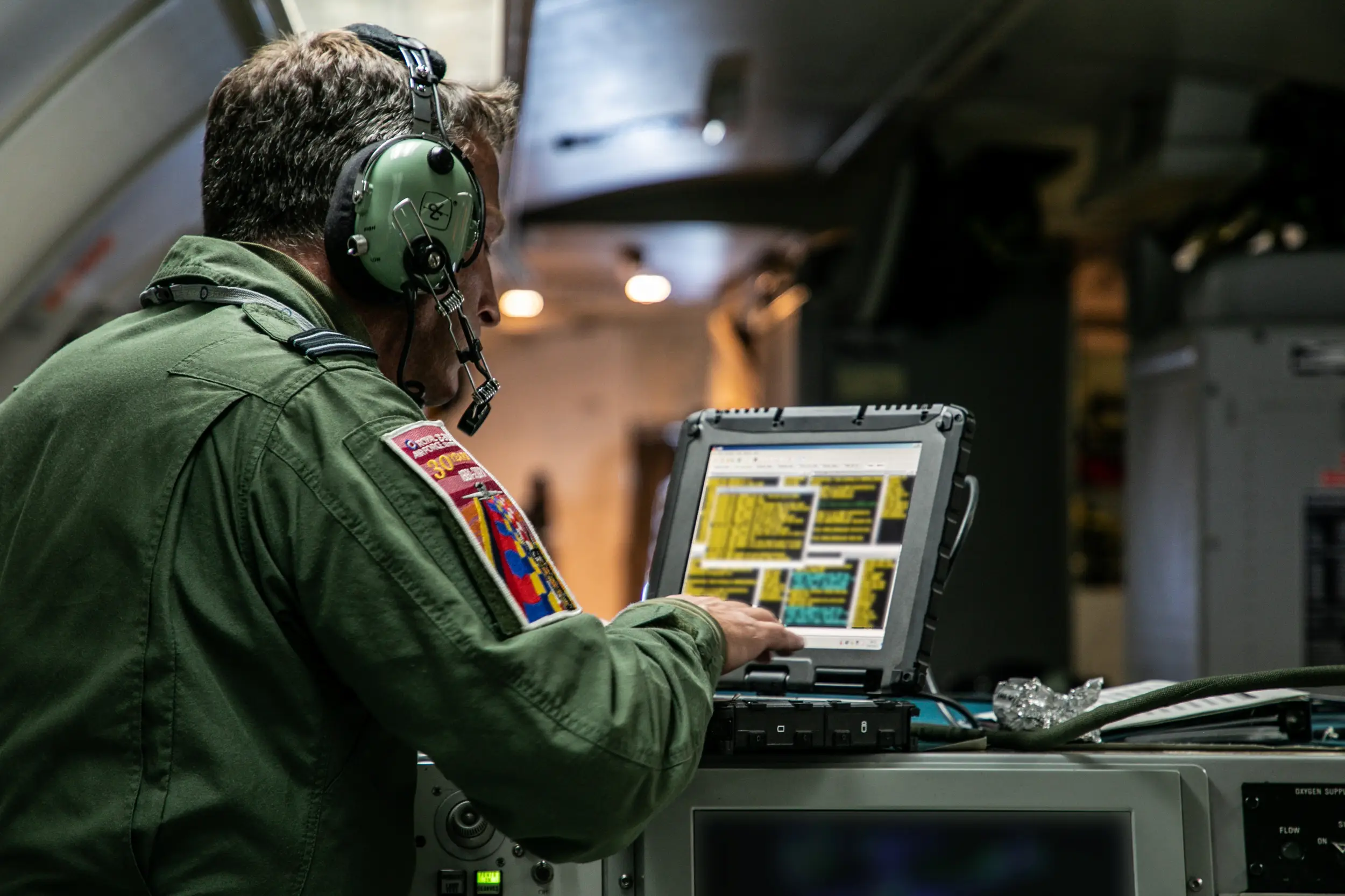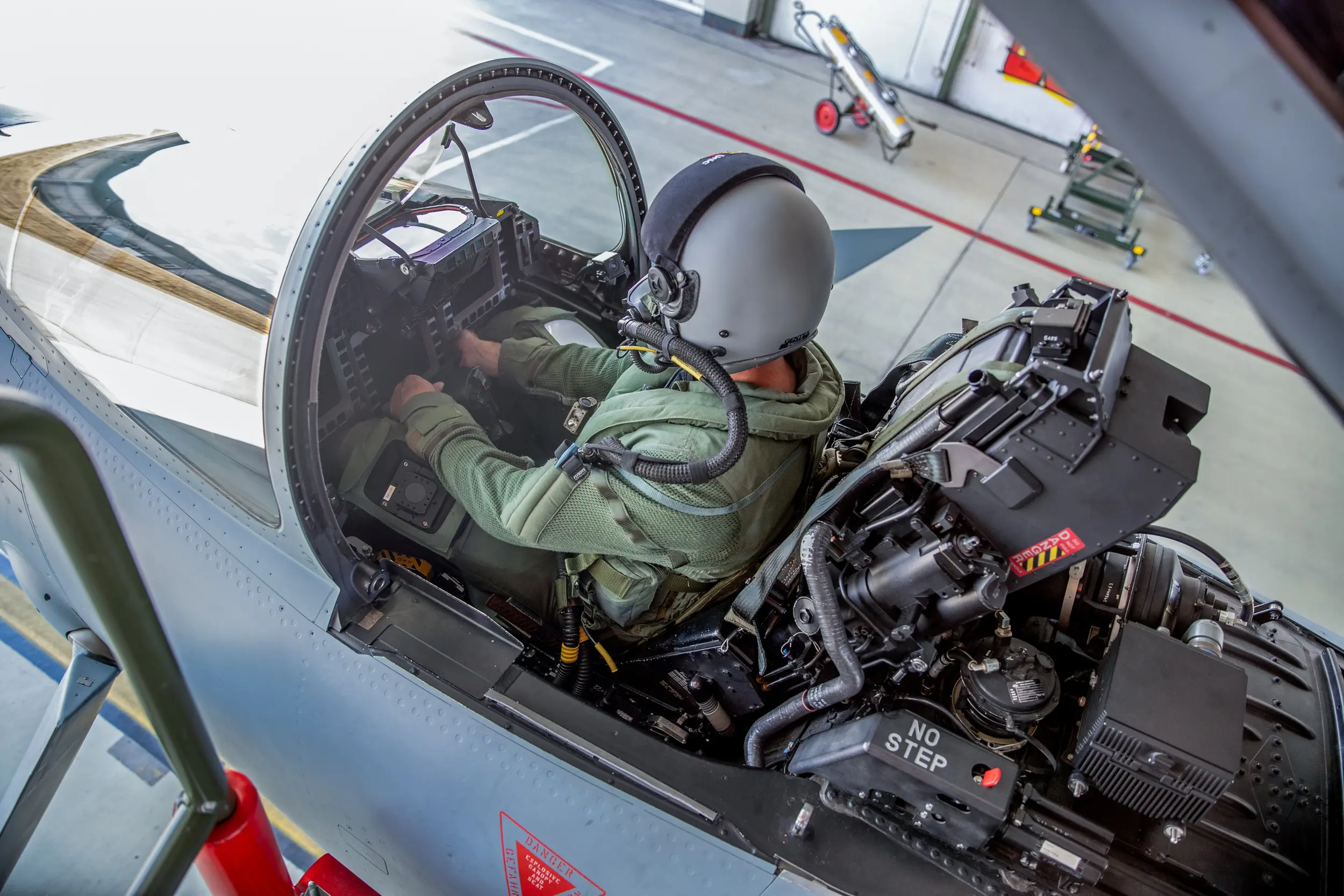READINESS REIMAGINED > SUSTAINMENT AND SUPPORT IN AN UNPREDICTABLE WORLD
studio | READINESS REIMAGINED | CHAPTER 4
The introduction of AI, big data, and advanced analytics in military sustainment is revolutionising operational efficiency. These technologies, combined with expert human strategy, are enhancing decision-making, reducing costs, and improving supply chain health in the defence sector.
As the Western air fleet advances technologically, it is relying upon modern readiness and sustainment strategies like the use of artificial intelligence to make the best choices at speed and scale. Royal Air Force image.
New technologies offer significant advantages in military sustainment, boosting readiness for armed forces and cutting lead times and costs. However, it is vital for industry leaders such as Collins Aerospace, an RTX business, to balance technological advancements and human strategy.
The defence sector is grappling with various emerging and innovative technologies with implications across military priorities. Speaking at the DSEI exhibition in London in September 2023, Erika Kuročkina, Lithuania’s Vice Minister of Economy and Innovation, drew particular attention to artificial intelligence and big data.
‘No other emerging disruptive technology has more cross-cutting implications for military operations than AI, which derives from the ability of algorithms to make optimal or quasi-optimal choices to achieve specific goals,’ Kuročkina said.
Using AI to tackle logistical challenges reduces turnaround time for the sustainment of key systems. UK MOD image.
AI’s Role in Enhancing Military Logistics and Efficiency
Using AI to crunch big data would enable fast decision-making and other advantages, she said, while there is a particular advantage in the sustainment sphere:
‘Applying AI to logistics is already generating significant improvements to operational efficiency and military supply lines, thus helping reduce costs,’ she said.
Such technologies are emerging at a time of evolution for the sustainment and readiness sector.
Andrew Ormsby, Associate Director for Service Engineering for Military Avionics Services with Collins Aerospace, said the industry is “changing from a concept where a physical asset is sold and forgotten about until it breaks”.
He said that today, companies such as Collins Aerospace have moved beyond a “break and fix” model.
‘Now we support the asset directly through its lifecycle – more importantly, we are supporting the customer’s mission, ensuring that the capability is ready to go at a moment’s notice.’
The life cycles of aging platforms can be radically extended with modern sustainment methods, which can predict faults and compensate with appropriate logistical support. Royal Air Force image.
Integrating Service Engineering with Technological Advances
The service engineering approach embraces technological advances, enabling the company to predict potential faults and verify any risks quickly. However, this must be combined with the expertise of dedicated service engineers.
‘Without the benefit of service engineering, the potential fault could drive the removal of the system asset to be diagnosed at a service centre, which brings into play oftentimes a very long logistics chain and turnaround time,’ he explained.
Steve Griffin, Director of Integrated Product Support at Collins Aerospace, pointed to the company’s performance-based logistics (PBL) contracts in particular, which are tailored to the needs of individual customers.
Diminishing Manufacturing Sources and Material Shortages (DMSMS) is a particularly popular service, he said, providing analysis not just of obsolescence but of the health of the wider supply chain.
‘We do everything from simple analytics and repair metrics to things that are a lot more complex, like obsolescence analysis and resolution,’ he explained.
Flexible supply chains enable dispersed logistical support, critical to maintaining a rapid response force, ready to be deployed throughout the world. Bundeswehr image.
Proactive Approach to Supply Chain Health and Obsolescence
Griffin said the company has a range of dedicated tools, some common within the industry and others proprietary to Collins Aerospace. He said these provide multiple tiers of obsolescence analysis, with some tied to the company’s production capabilities.
Within the DMSMS process, the company is looking to the future to determine the wider health of supply chains, he said. He explained that this works on a kind of traffic light system, with a red light showing an obsolescence problem today, a yellow highlighting one for the near future, and a green giving a clean bill of health.
‘In our contracts, we offer several different tiers of levels of support. Some might just be identifying the problem, some might be making a recommendation for how to solve it,’ Griffin explained.
‘And then some of them might go all the way through the resolution phase where we’re designing out the obsolescence, either through finding replacement parts or changing and modifying the product altogether to remove the obsolete part.’
By combining technological advantage with human experience, cutting-edge sustainment provides significant operational benefits, Ormsby noted.
‘Customers see the benefit of having Collins Aerospace service engineering on-site, offering operational expertise on the system as well as understanding the customer mission,’ he said.
‘The service engineer effectively becomes a force multiplier by allowing the customer immediate access to Collins aerospace expertise.’
Innovations in sustainment can provide direct benefits for armed forces. For example, look at Collins Aerospace’s work in modernised pilot helmet fitting solutions for F-35 pilots.
Collins Aerospace’s technology plays a key role in supporting the logistics supply for the F-35. For example, if an F-35 pilot has a broken visor or is suffering from headaches or neck fatigue, their discomfort could be relieved through an optimised pilot helmet-fitting solution.
Today’s system is based on handheld 3D scanners, a final pilot scanning process enabling users to scan anywhere at any time, conduct same-day scan and file conversion, and enable same-day fitting.
The concept provides partner nations with significant scalability, noted Dustin Vagedes, Staff Engineering Manager for Collins Aerospace.
He noted that A partner nation with 12 F-35 pilots per year will have different helmet scanning needs than one with 112 pilots per year; some may opt for their own dedicated facility, while others would prefer to do it on a more ad hoc basis. Through the handheld technology, ‘we are giving them more options,’ he explained.
Legacy scanner solutions required the OEM to calibrate the system when needed manually, added Matthew Soukup, Principal Systems Engineer for the F-35 Pilot Fit programme. But with the modern, handheld scanner, they can self-calibrate on demand every time they use it.
‘There’s a big cost and time saving for our customers,’ he said.




